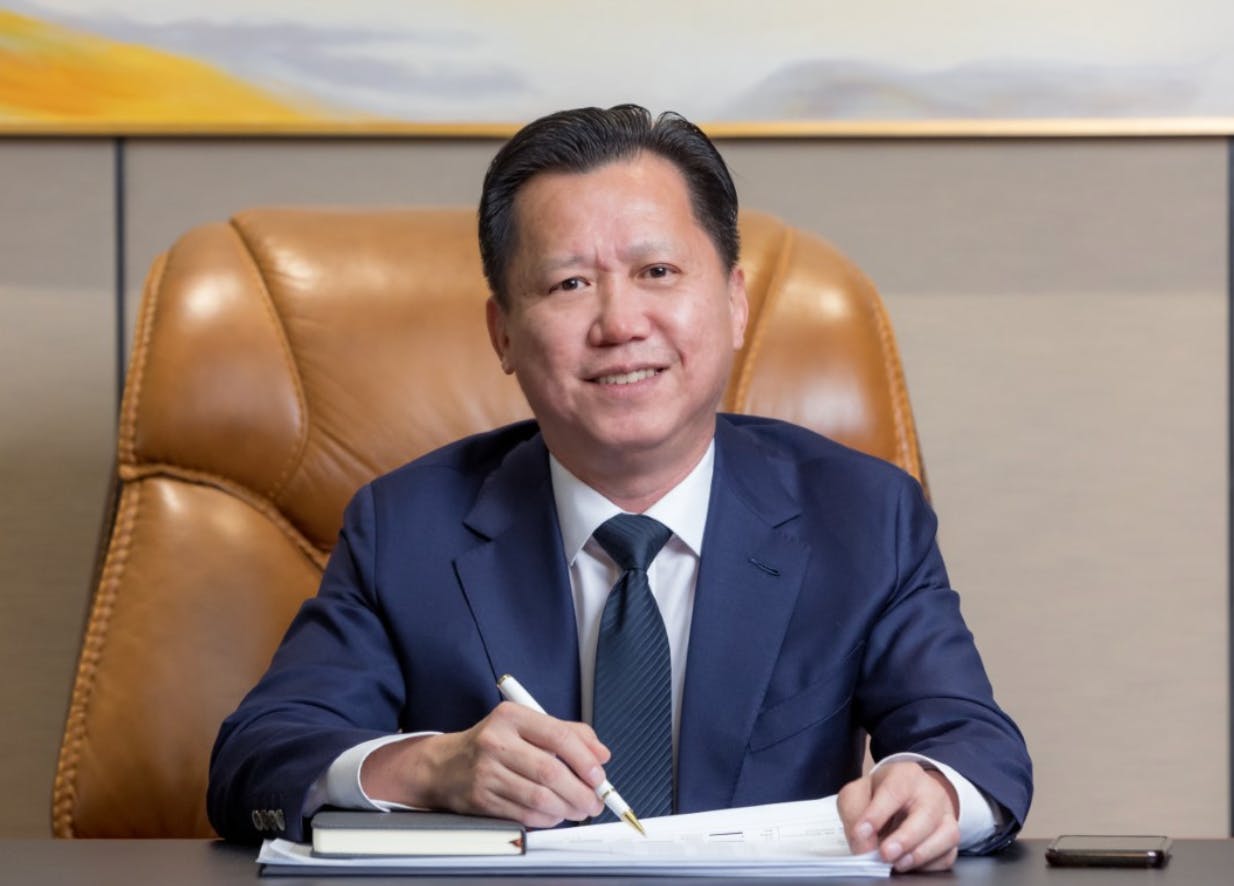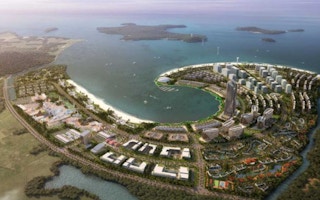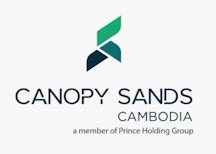By the end of 2045, a 834-hectare patch of the bustling coastal city of Sihanoukville could more closely resemble Singapore than anywhere in Cambodia.
Developed on reclaimed land, the US$16 billion high-end complex named Ream City is one of Cambodia’s biggest ever development projects and part of a plan to transform the southwestern seaside city into a hub for tourism, trade and housing, and home to 130,000 residents.
Sihanoukville has succumbed to rapid development and a reputation as a gambling haven over the years, but a new development masterplan, announced in November, aims to reimagine it as a smart, green and liveable city powered by services, technology and tourism. The idea is for Ream City to fit into that narrative.
The company behind Ream City is Canopy Sands, a member of Prince Holding Group, a conglomerate. It will be master-planned by Surbana Jurong Group, a Singapore-based consulting firm for urban infrastructure.

Khong Weng Fook, managing director, Canopy Sands. Image: Canopy Sands
In this interview, the managing director of Canopy Sands, and former Surbana Jurong executive Khong Weng Fook, talks to Eco-Business about supporting the local community, minimising environmental impact, and the future of sustainable development in Cambodia.
What does sustainable development mean to you?
To me, sustainable development is not just about caring for the environment. The economy, society, and culture are other core principles to consider, and as a master developer, we focus on generating long-term impact across all four pillars. A good guide to follow is the United Nations’ Sustainable Development Goals. Another key consideration is supporting the local community, which we do through our outreach and scholarship programmes.
How does the scholarship programme work?
We are sponsoring 400 underprivileged Cambodian students, including those living near the development, to pursue construction and engineering degrees with an emphasis on sustainable development, digital economy and financial services, and hospitality. These are key economic drivers in Cambodia right now, and key focus areas for our business. We believe that this is one of the largest private scholarships in Cambodia, and we will be investing US$2 million in it. We will also be offering internship and employment opportunities after they graduate. But the scholarship is not bonded — the idea isn’t just to create a talent pipeline for ourselves, it’s to give people better career choices.
How will Ream City be integrated with nature?
We envision Ream City as a green city, both in terms of sustainability practices and urban design. Besides deploying green building solutions and environmentally responsible practices, we’re investing in sustainability education and outreach in the local community. A feature of the development is green landscaping on the Sky Terrace and roof gardens, giving people a lush space to work and live. We also have a green and blue master plan, which will guide our green park and river network within Ream City.
What environmental impact will the development have?
We have prevention and mitigation measures to ensure the minimal potential impact on the environment, and at our command centre we have a solid waste storage facility and take measures to control air pollution. These measures may seem routine or normal to foreigners, but in the Cambodian context other sites may lack protocols to minimise environmental impact.
What were the findings from the environmental impact assessment (EIA) before the Ream City development started?
Thorough EIA studies have been carried out together with the help of local EIA consultants to fulfil the government’s requirements. The existing biodiversity in the area has been recorded and studied. The impact of our development on biodiversity is evaluated and solutions were proposed to mitigate the impact to the best of our abilities. For example, some of the mangrove trees were displaced by the development, but subsequently, we will plant new ones to minimise the disturbance to the environment. The EIA studies also provide a good benchmark as to what the environment is like before the development, and we can continuously monitor and track the changes during our development to ensure it is environmentally-friendly.
What impact do you expect Ream City to have on the local culture?
Four months ago we distributed care packages to 300 local families. Then, we had not engaged the locals in the conversation about training and employment, it was really more of a gesture of goodwill, because we know there are underprivileged families living there. When we engaged the village chief, the first thing that came up was that local people want to job opportunities beyond the usual sectors of fishing, hospitality and tourism. He said that the developers in the area had not been providing locals with sufficient jobs, which were going to overseas workers. We got that message loud and clear, hence the scholarship programme.
The second thing we are exploring is to provide a free health care for underprivileged people in the area. As long as we approach our stakeholders with good intentions, and provide them with jobs and a decent living, I don’t see why they would be unreceptive to us. We are going the extra mile to provide health care, daily essentials, and employment opportunities.
Part of the Ream City plan is affordable housing. How affordable is the housing you’ll be offering to ordinary Cambodians?
In general, we will be providing a range of housing within Ream City to cater to different needs across the community. Realistically the prices of these homes will correspond to the type of properties on offer, and are subject to market demand. With the expected growing population of locals and foreigners in the area, the price of properties may rise with increasing demand. If the market overtly exceeds the fundamentals, we will work closely with the government to see how to best mitigate this concern.
Is Ream City just the beginning for developments like it in Sihanoukville and elsewhere in Cambodia?
A few days ago, the Cambodian government introduced a new Sihanoukville special economic zone master plan [which aims to rejuvenate the city]. They have started the feasibility study and the design of the project. Cambodia is on the right trajectory for sustainable development, and there’s now a special focus on Sihanoukville. Hopefully, in 10 years’ time, we can positively influence more and more local developers to follow us by incorporating sustainability into their development plans.


















